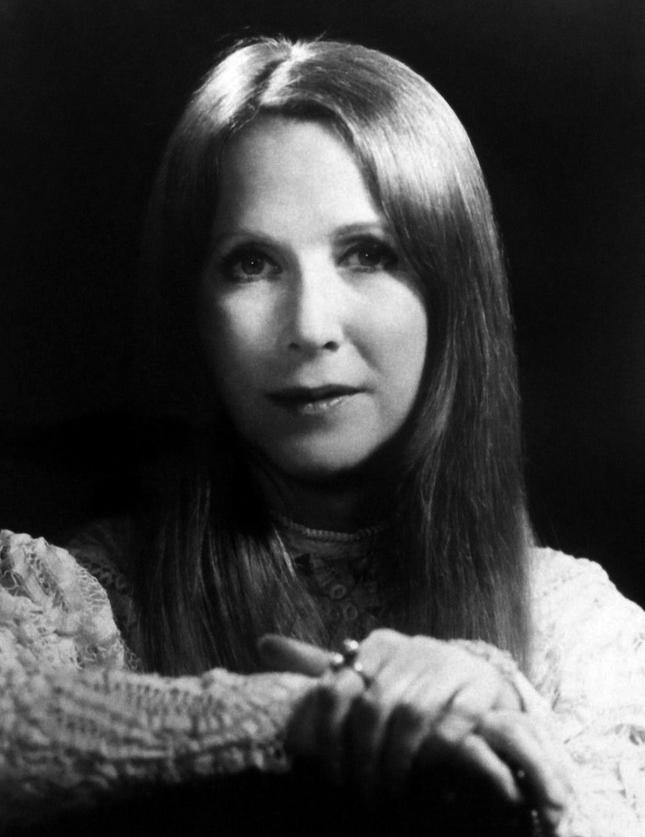Julie Harris: the Enchanting, Transforming Broadway Legend
By • August 29, 2013 0 1433

I saw Julie Harris for the first time in a live performance when I was in high school in the 1950s—it was Jean Anoulih’s version of the Joan of Arc story, “The Lark,” on Hallmark Hall of Fame when network television broadcast and produced live drama on a regular basis
I probably did not fully understood much of what I was seeing in those days, that it was live theater of a sorts, but I could sense that Harris was something pretty special, especially on stage.
Over the years, you could catch Harris in plenty of memorable film roles—opposite James Dean, no less, in “East of Eden, in the film version of Carson McCullers’s great and haunting novel, “Member of the Wedding,” in “The Haunting” and “Requiem for a Heavyweight,” and much later, in a small but striking role in “Out of Africa.” She was also in a television prime soap opera at one point, being part of the “Knots Landing” gang, a factoid which will no doubt lead of her obituary somewhere in some publication or blog.
Harris, who died of congestive heart failure at age 87 this past week, was, even with all the movies and television, a certifiable legend of the stage, a star of Broadway, a person who lived in the ephemeral world of a play being performed on a stage in front of breathing and feeling audiences. It’s a hard thing to become an acting legend this way—after a while, it’s all reduced to memory, rumor, story, someone’s long ago fragmentary keepsake of a thought.
She was fierce and fantastic in “Member of the Wedding,” playing the desperately lonely Frankie, but I never saw her on stage in that. It took a few years, but I caught up with her when I moved to Washington and saw my first play at the Kennedy Center. It was Harris in “The Belle of Amherst,” playing Emily Dickinson, bringing that notoriously secretive recluse to life.
I saw her again being driven around by Brock Peters in “Driving Miss Daisy,” and matching wit, heart and sarcasm with Charles Durning in “The Gin Game,” both also at the Kennedy Center. Later, she was in “Lettuce and Lovage,” a play by Peter Shaffer of “Amadeus.” It was a comedy, with a role that was originally written for Maggie Smith, but which Harris took on the road, eccentric, acidic and unforgettable.
I remember having a telephone conversation with her, and we talked mostly about the theater, her roles, other actors. She seemed a woman incapable of bragging, but she had a sense of humor. After a while, we were just telling each other about plays we had seen, or plays she had been in. It was theater talk of the kind that wasn’t necessarily quotable or memorable in its details but hard to forget in its warmth.
Theater isn’t easy, and being on the stage isn’t easy. Ask any movie star who takes to that high wire on a floorboard, misses his cues and waits for someone to yell “cut.” Harris, by all accounts, worked hard and almost always and certainly often. She had some impediments to stardom. She was of slight stature. She was not by the common definition a great beauty, although she could play one. Her voice was somewhat thin. She overcame these handicaps by dint of finely tuned emotion, by craft, by imagining and being the women she played. She had range. She could convince by the soft sharpness of a gesture and by making the most of all her gifts.
People forget: we all think of “Cabaret” and Sally Bowles as belonging to Liza Minnelli or the last woman to play her on stage. But it was Harris who is cited by author Cristopher Isherwood, upon whose “Berlin Stories” both “Cabaret” and the non-musical, “I Am a Camera,” are based. Isherwood said that Harris was more Sally Bowles than even the character he wrote.
Harris on stage was more than any person created on a page. She was an enchanter, a transformer, an actor and actress who created in front of our eyes and transformed us.

